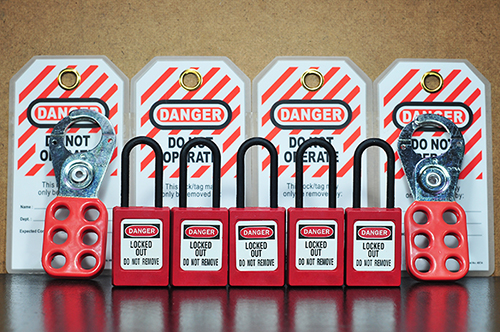- Whatsapp: +86-13396996593
- Email: [email protected]
Affected employees are those who are affected by the work of repairing, maintaining, or adjusting equipment or machinery. They are not the technicians directly involved in lockout/tagout operations in the Lockout/Tagout Program (LOTO), but their workflow and environment are altered by these operations. Affected employees must understand the fundamentals of the lockout/tagout procedure, know when and why equipment lockouts are performed, and be explicitly prohibited from attempting to reboot or operate equipment while it is locked out. This training and communication is a critical step in ensuring that all employees work safely and efficiently during equipment maintenance. Companies should provide regular training to affected employees to ensure their safety awareness and compliance with procedures.

Source: Braun Intertec
The Lockout/Tagout procedure is a safety protocol designed to protect workers from hazardous energy releases while servicing and maintaining machinery and equipment. This procedure involves two primary categories of employees: authorized employees and affected employees.
Training affected employees is crucial to maintaining workplace safety during the lockout/tagout process. Here are the steps to effectively train affected employees:
Understanding the distinction between authorized and affected employees is vital for effective LOTO procedures:
Q1: Why is it important for affected employees to be trained in LOTO procedures?
A1: Training affected employees is crucial to prevent accidental injuries and fatalities. Proper training ensures that affected employees understand the significance of lockout/tagout devices and do not inadvertently attempt to use equipment under maintenance.
Q2: How often should affected employees receive LOTO training?
A2: Affected employees should receive initial training upon hire and periodic refresher training. Additionally, retraining is necessary whenever there are changes in job assignments, machinery, equipment, or processes that present a new hazard.
Q3: What should an affected employee do if they notice a lockout/tagout device has been removed?
A3: If an affected employee notices that a lockout/tagout device has been removed, they should immediately report it to their supervisor or the authorized employee responsible for the procedure. They should never attempt to use the equipment until it has been verified as safe.
Q4: Can an affected employee become an authorized employee?
A4: Yes, an affected employee can become an authorized employee by receiving the necessary training and certification. This includes comprehensive instruction on lockout/tagout procedures, identifying hazardous energy sources, and proper use of LOTO devices.
Q5: What are the consequences of not training affected employees in LOTO procedures?
A5: Failing to train affected employees can lead to severe consequences, including workplace accidents, injuries, and fatalities. It can also result in legal liabilities, regulatory fines, and a damaged reputation for the organization.
Privacy Policy
Copyright Lockey Safety Products Co.,Ltd SUPPORT BY :JUNJ